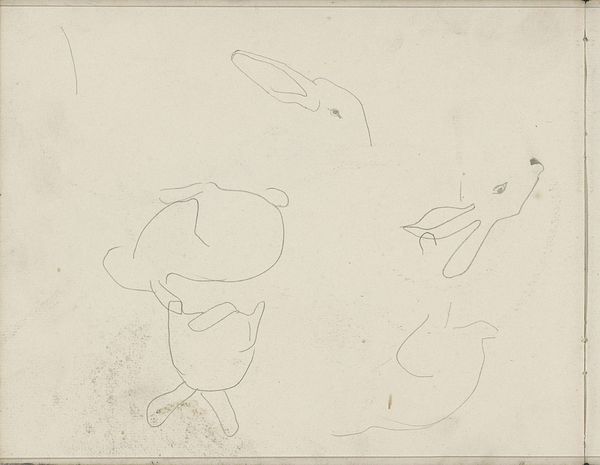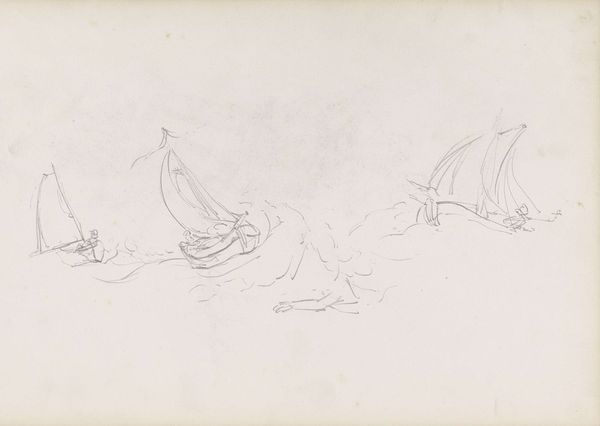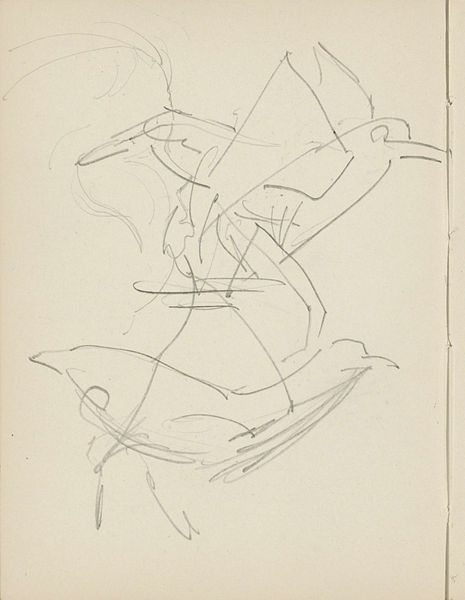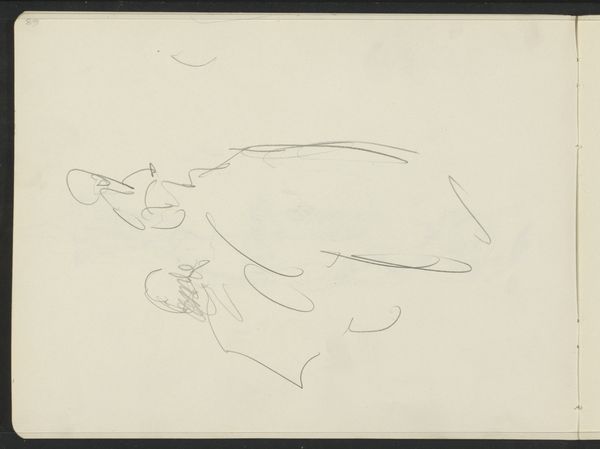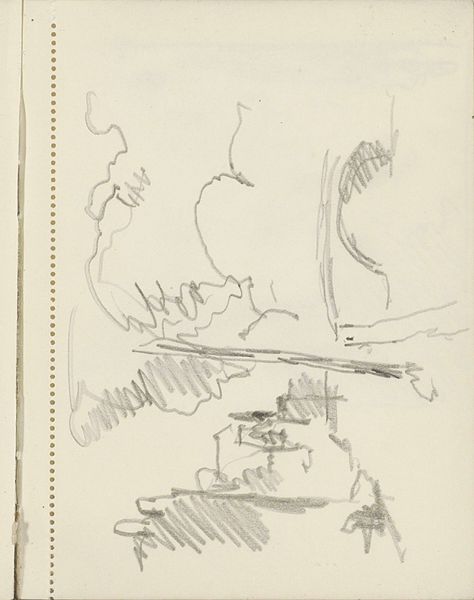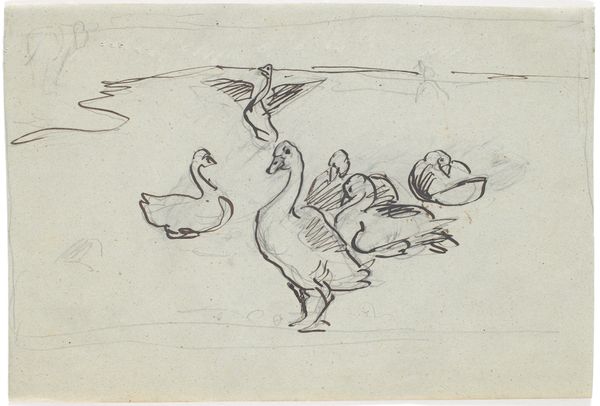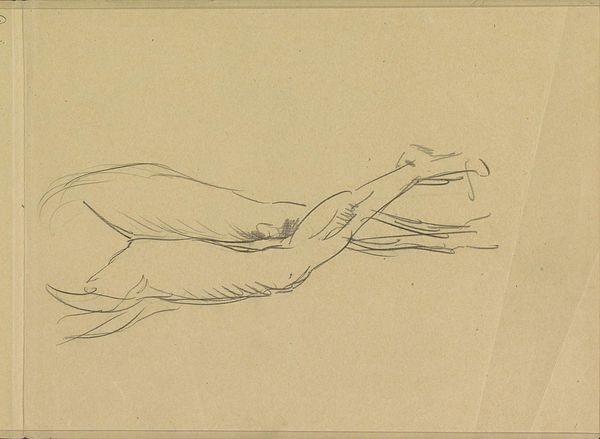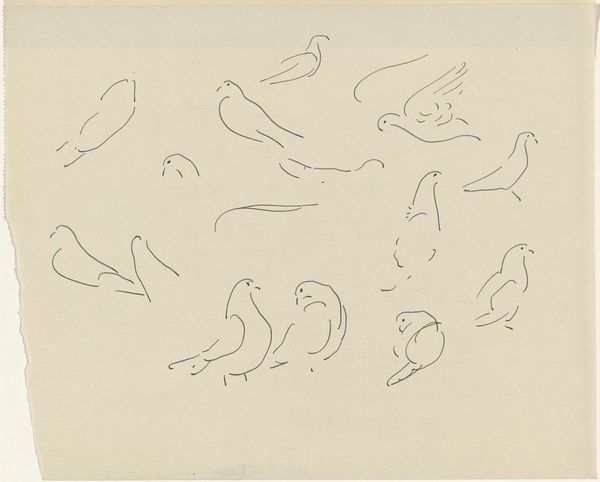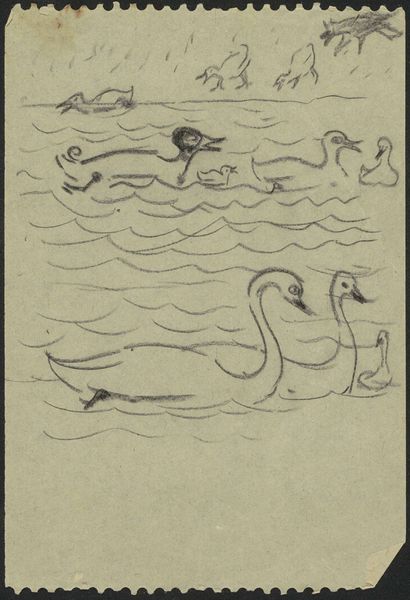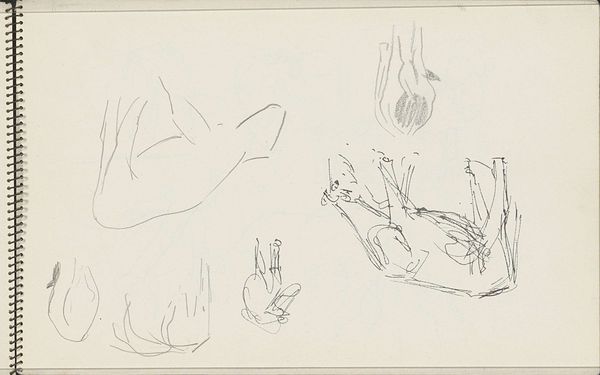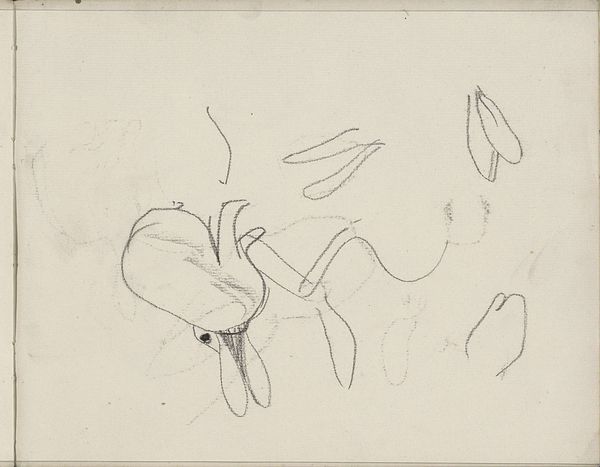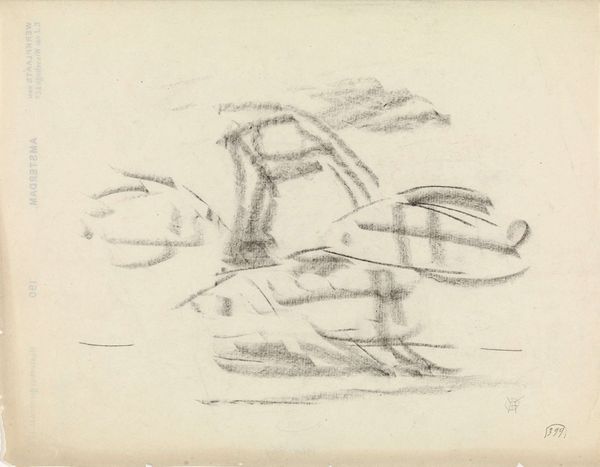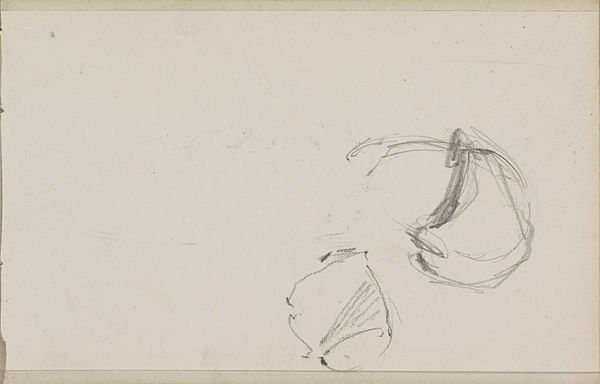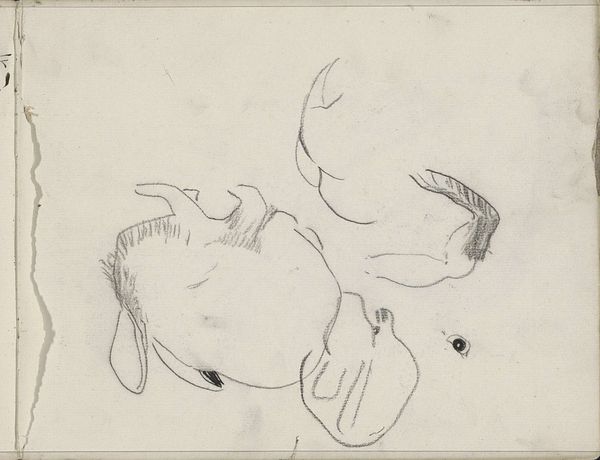
drawing, paper, ink, pen
#
drawing
#
comic strip sketch
#
thin stroke sketch
#
quirky sketch
#
landscape
#
bird
#
figuration
#
paper
#
personal sketchbook
#
ink
#
idea generation sketch
#
sketchwork
#
sketch
#
pen-ink sketch
#
abstraction
#
line
#
sketchbook drawing
#
pen
#
sketchbook art
#
initial sketch
Copyright: Rijks Museum: Open Domain
Editor: So, this is *Standing Bird and a Bird's Nest*, a pen and ink drawing on paper by Carel Adolph Lion Cachet, from around 1930. I’m immediately struck by its sparseness—just these quick, almost cartoonish lines. What do you see in this piece, and how does it speak to Cachet's broader artistic concerns? Curator: This sketchbook page offers a raw glimpse into the artist's process, almost like overhearing a private conversation. Considering the date, it's crucial to understand the interwar period's socio-political climate. Abstraction wasn't just about aesthetics; it was a rejection of traditional power structures, a questioning of representation itself. These seemingly simple sketches – a bird, people in a boat – can we read them as metaphors for freedom, migration, or even confinement? Editor: Confinement? I hadn’t thought of that. Curator: Yes, the lines, while simple, are also quite firm, definitive. Consider the bird – it is standing, not flying. What might that imply about the limitations imposed on even the most seemingly free creatures? And those figures huddled in the boat – is that communal travel, or are they seeking refuge? I wonder about themes around migration and displacement as key areas of analysis. Editor: So, you’re saying these quick sketches aren’t just idle doodles, but possibly loaded with meaning related to the era’s anxieties? Curator: Precisely. Cachet, consciously or not, was responding to his time. Even the very act of sketching – a less formal, more immediate mode of creation – is a kind of rebellion against the established art world. What is fascinating about the loose quality of these lines, it allows us, the viewer, into the process of interpretation; we get to assign and engage meaning into the piece as interpreters and therefore feel personally in contact with the drawing itself. Editor: That’s a powerful way to look at it; it pushes me to consider how socio-political contexts influence even the simplest-seeming artworks. Curator: Absolutely, art never exists in a vacuum. Engaging with the social and historical landscape is key to unlocking deeper layers of meaning.
Comments
No comments
Be the first to comment and join the conversation on the ultimate creative platform.
